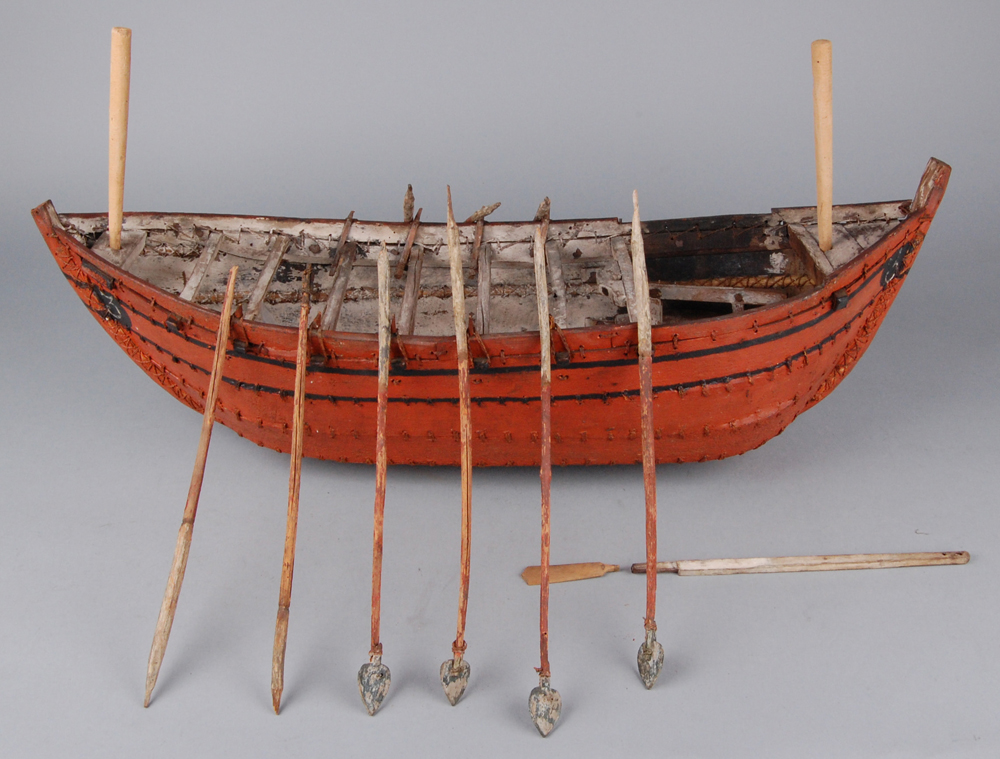Stop 14 - Model of a Masula Surf Boat
This model of a surf boat from Madras in India is particularly interesting as it clearly shows how the boat was made. The wooden planks have been sewn together – a process which would have been carried out by two people passing ropes made from coconut fibres to each other through holes bored in the planks. If you look at the model carefully, you can see the stitches form criss cross patterns in board, under which are thick lines of coconut fibre over the seams of the planks. This wadding helped to prevent water seeping into the boat. This general technique of boat building was commonly used around the Indian Ocean for thousands of years, not only in India but in other regions such as Sri Lanka, Kenya and Oman. Masula boats are now scarcely found along the coast of India and tend to be used for fishing. However, before the construction of the harbour in Madras in the late nineteenth century, these vessels were used to ferry goods and people between large ships and the shore. These vessels would have therefore been one of the first sights and experiences of India for visitors arriving into Madras. It is perhaps not surprising then that models of these boats were made during the nineteenth and early twentieth centuries as souvenirs. This was a time of British imperialism when travel to India from Britain became more accessible and the demand for exotic goods and souvenirs peaked.

- Next Stop
-

Stop 15 - Model of a Yathra Dhoni
next